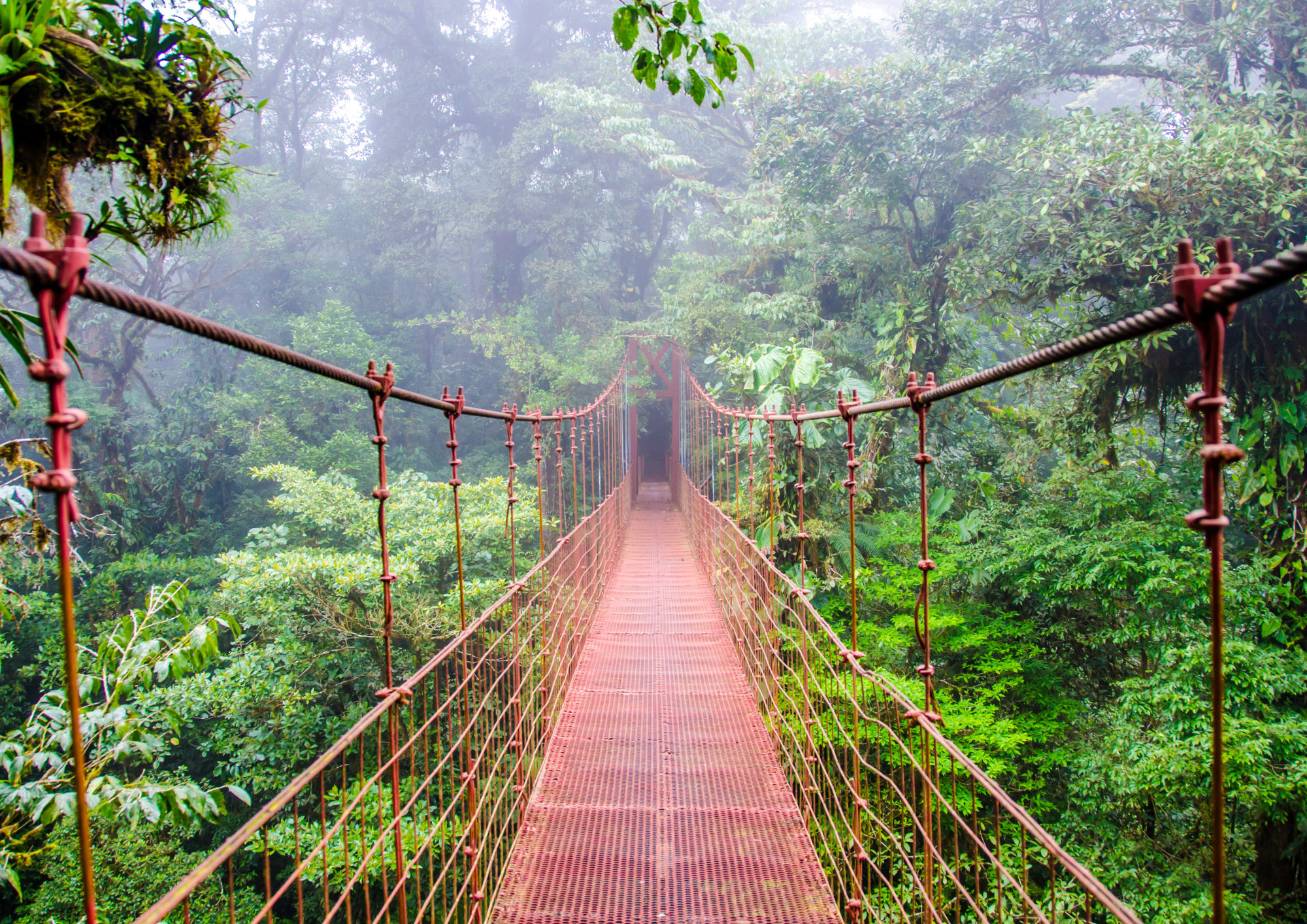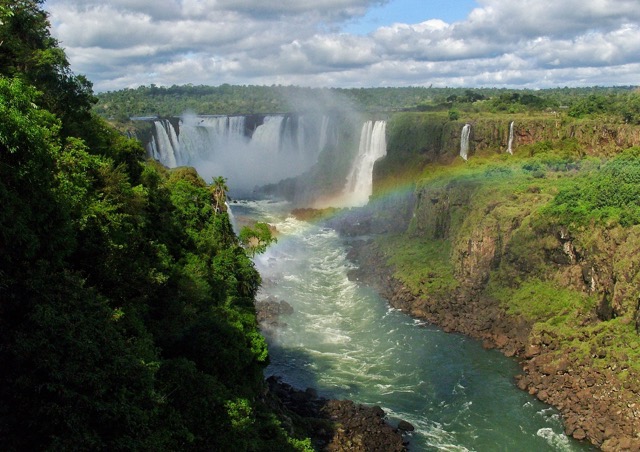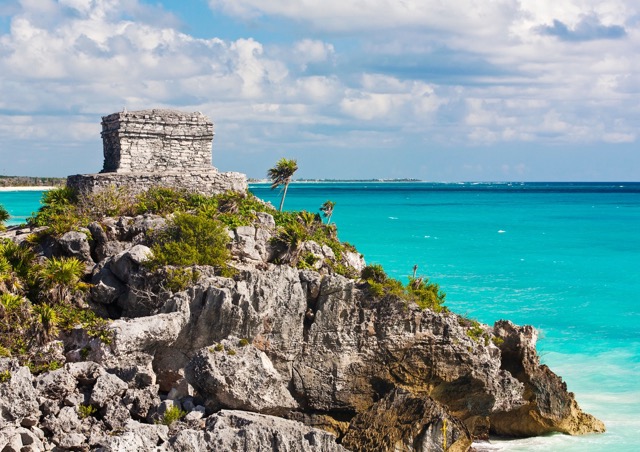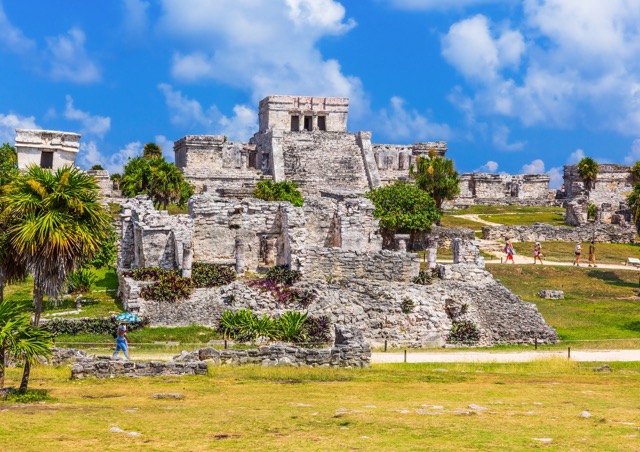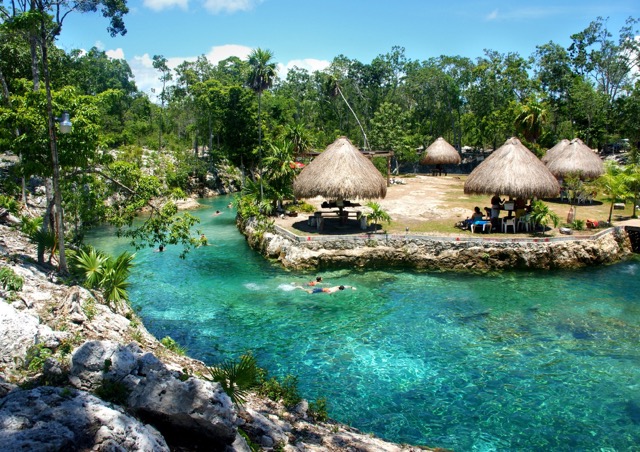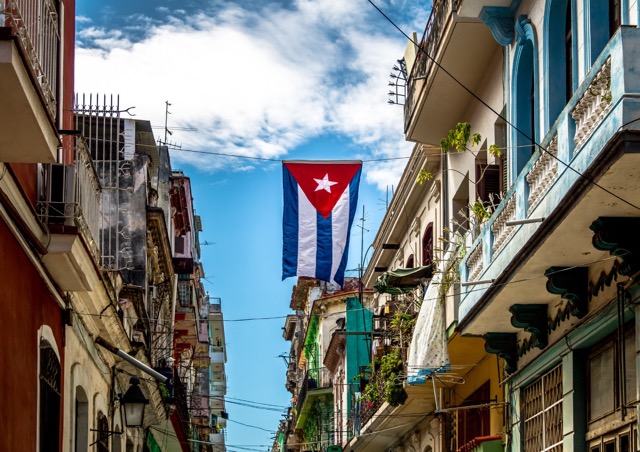Here are ten must-see destinations in Latin America. Latin America is a region of incredible contrasts, stretching from the deserts of northern Mexico to the ice fields of Patagonia. The continent is filled with vibrant cultures, ancient civilizations, and landscapes that range from tropical beaches to towering mountain ranges. For travelers, it offers a unique blend of history, adventure, and relaxation. Whether you’re exploring bustling cities, wandering through ancient ruins, or taking in the majesty of natural wonders, Latin America has something for everyone. Below are some of the top destinations that truly capture the essence of this diverse and fascinating part of the world.
Machu Picchu, Peru: Journey to the Lost City of the Incas
Perched high in the Andes Mountains, Machu Picchu is one of the must-see destinations in Latin America, attracting millions of visitors each year. This ancient Incan city, built in the 15th century, was rediscovered by explorer Hiram Bingham in 1911 and has since become one of the world’s most important archaeological sites. Set against the backdrop of steep mountains, the site is a marvel of engineering, with terraced fields, temples, and stone structures that seem to blend seamlessly with the surrounding natural environment.
For those who love trekking, the Inca Trail is the most famous route to Machu Picchu. This multi-day hike takes you through dense cloud forests, past lesser-known Incan ruins, and offers stunning views of the Andes before finally reaching the Sun Gate, which provides a first glimpse of the city below. Alternatively, the scenic train from Cusco allows a more relaxed way to access the site.
While the physical beauty of Machu Picchu is undeniable, what truly captivates visitors is the mystery that surrounds it. Why was it built in such a remote location? Was it a royal estate, a religious center, or a military stronghold? These questions remain unanswered, adding an air of intrigue to this magical place.
Iguazú Falls, Argentina and Brazil: Nature’s Majesty Unleashed
When it comes to waterfalls, few can compare to the sheer size and power of Iguazú Falls. Located on the border between Argentina and Brazil, this massive waterfall system spans nearly 3 kilometers (1.8 miles) and consists of hundreds of individual cascades. The most famous of these is the “Devil’s Throat” (Garganta del Diablo), a horseshoe-shaped chasm where water plunges 80 meters (262 feet) into a roaring abyss below.
One of the most exciting ways to experience Iguazú is by taking a boat tour that brings you right to the base of the falls, where you can feel the spray on your face and hear the thunderous roar of the water crashing down. For those who prefer a less adrenaline-filled experience, the various walkways and viewing platforms on both the Argentine and Brazilian sides offer stunning panoramic views.
Beyond the waterfalls themselves, the surrounding national parks (Iguazú National Park in Argentina and Iguaçu National Park in Brazil) are teeming with wildlife, including toucans, monkeys, and colorful butterflies. Exploring the rainforest that surrounds the falls is a highlight for nature lovers, with the opportunity to see rare species in their natural habitat.

Cartagena, Colombia: A Living Museum of Colonial History
Cartagena de Indias, with its beautiful walled city, cobblestone streets, and colonial architecture, feels like stepping back in time. Founded in 1533, Cartagena was once one of the wealthiest and most important ports in the Spanish Empire, and its old town has been preserved as a UNESCO World Heritage site. Walking through its narrow streets, you’ll encounter colorful buildings with flower-filled balconies, grand plazas, and centuries-old churches.
One of the most striking features of Cartagena is its contrast between the old and the new. While the historic center is a beautifully preserved relic of the past, the modern skyline of Bocagrande rises in the distance, offering luxury hotels, shopping centers, and vibrant nightlife. The mix of history, culture, and modernity makes Cartagena a truly unique destination, solidifying its reputation as a must-see destination in Latin America.
Cartagena is also known for its lively festivals, including the Hay Festival of literature and the Cartagena International Music Festival, which draw artists and visitors from around the world. After a day of exploring the city’s cultural riches, you can head to the nearby Rosario Islands or Playa Blanca to enjoy some of the best beaches on Colombia’s Caribbean coast.
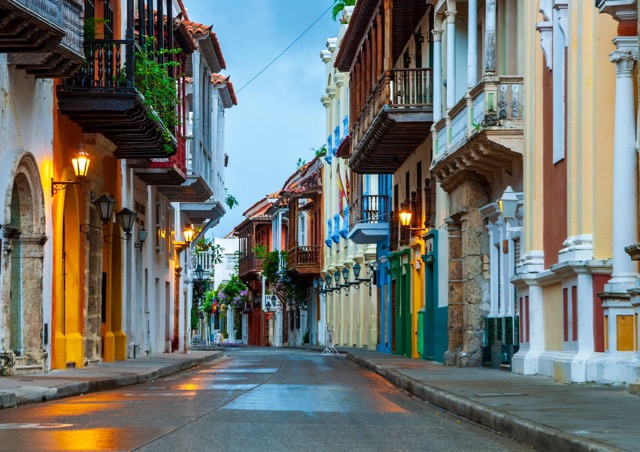

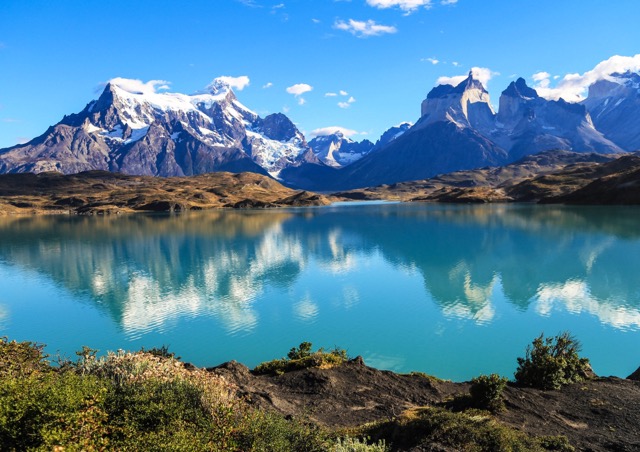
Patagonia, Argentina and Chile: The Last Frontier of Adventure
Patagonia is a vast, rugged region at the southern tip of South America, stretching across both Argentina and Chile. Known for its dramatic landscapes, including windswept plains, towering glaciers, and snow-capped peaks, Patagonia is a paradise for outdoor enthusiasts. It’s a place where nature reigns supreme, and human presence feels small and insignificant in comparison.
One of the top destinations in Patagonia is Torres del Paine National Park in Chile, famous for its jagged mountain range, turquoise lakes, and the striking granite towers that give the park its name. Hikers from around the world flock here to embark on multi-day treks like the W Circuit, which takes you through valleys, past glaciers, and along scenic ridges offering breathtaking views at every turn.
In Argentina, Los Glaciares National Park is another must-see, home to the famous Perito Moreno Glacier, one of the few glaciers in the world that is still advancing. Visitors can take boat tours to see the glacier up close or even hike on the ice itself for a once-in-a-lifetime experience.
Despite its remote location, Patagonia has become a mecca for eco-tourism, with lodges and campsites designed to minimize environmental impact while allowing visitors to fully immerse themselves in the wild beauty of the region.
Tulum, Mexico: Where Ancient History Meets the Caribbean Dream
Tulum is a must-see among the destinations in Latin America that offers a bit of everything. Located on the Yucatán Peninsula in Mexico, Tulum is famous for its idyllic combination of stunning white-sand beaches and well-preserved Mayan ruins. The Tulum Archaeological Zone is perched dramatically on cliffs overlooking the Caribbean Sea, offering visitors the chance to explore ancient history while enjoying one of the most beautiful coastal views in the world.
In addition to the ruins, Tulum is also known for its proximity to cenotes—natural sinkholes that are perfect for swimming, snorkeling, or diving. These crystal-clear, freshwater pools are scattered throughout the Yucatán and were considered sacred by the ancient Maya. Some of the most famous cenotes near Tulum include Dos Ojos, Gran Cenote, and Cenote Calavera.
Tulum has also become a trendy destination for eco-conscious travelers, with many boutique hotels and yoga retreats offering sustainable, low-impact accommodations. Whether you’re interested in exploring the rich history, relaxing on the beach, or connecting with nature.

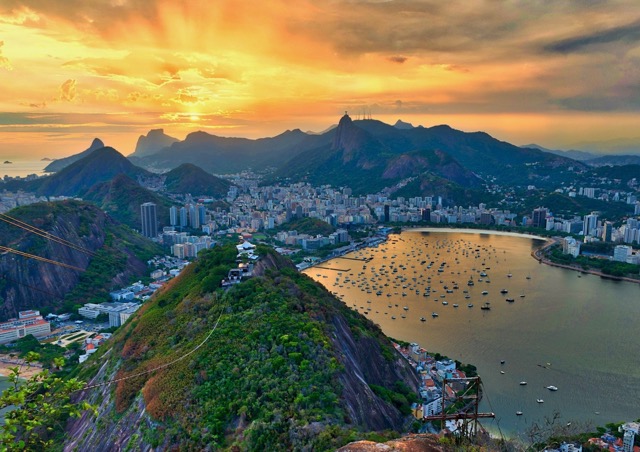
Rio de Janeiro, Brazil: The Marvelous City
Rio de Janeiro is one of the most iconic cities in the world, famous for its vibrant culture, stunning landscapes, and, of course, the world-famous Carnival. The city’s most recognizable symbol is Christ the Redeemer, the massive statue that watches over Rio from the top of Corcovado Mountain. From this vantage point, visitors can enjoy panoramic views of the city, including the iconic beaches of Copacabana and Ipanema, the green peaks of Sugarloaf Mountain, and the shimmering waters of Guanabara Bay.
Rio is a city alive with energy, from the vibrant samba beats of Carnival to the excitement of soccer matches at the iconic Maracanã Stadium. Visitors will find no shortage of activities, whether it’s relaxing on the beaches, exploring the lush greenery of Tijuca National Park, or experiencing the street art and culture of the Santa Teresa neighborhood. This dynamic blend makes Rio one of the must-see destinations in Latin America.
One of Rio’s most unforgettable experiences is Carnival, a multi-day celebration filled with parades, music, and elaborate costumes. Held in February or March, the festival draws millions of people from around the world, making it the biggest party on the planet.

The Galápagos Islands, Ecuador: A Wildlife Paradise
The Galápagos Islands, located about 1,000 kilometers (620 miles) off the coast of Ecuador, are one of the world’s most unique travel destinations. Made famous by Charles Darwin, who based his theory of evolution on observations made here, the Galápagos remain one of the best places in the world to see wildlife up close, solidifying their status as a must-see destination in Latin America.
The islands are home to a wide variety of species found nowhere else on Earth, including giant tortoises, marine iguanas, and the distinctive blue-footed booby. Because the animals here have evolved in isolation and with little fear of humans, visitors can often get incredibly close to them. Whether snorkeling with playful sea lions, hiking across volcanic landscapes, or observing bird colonies, the Galápagos offer endless opportunities for adventure and discovery.

Salar de Uyuni, Bolivia: The World’s Largest Mirror
Located in the high-altitude plains of southwest Bolivia, **Salar de Uyuni** is the world’s largest salt flat, stretching over 10,000 square kilometers (4,000 square miles). During the rainy season, the salt flat is covered with a thin layer of water, creating a surreal, mirror-like effect that reflects the sky in perfect symmetry. This phenomenon has made Salar de Uyuni one of the most photographed locations in the world.
Even during the dry season, the salt flats are a stunning sight, with their endless white expanse stretching to the horizon. Many travelers use the town of Uyuni as a base for multi-day tours of the region, which also include visits to other natural wonders such as the Eduardo Avaroa National Park, known for its colorful lagoons and the flamingos that inhabit them.
The Salar de Uyuni is more than just a visual spectacle—it’s also a place where you can connect with one of the most remote and untouched landscapes on Earth.
Havana, Cuba: A Step Back in Time
Havana, Cuba’s vibrant capital, feels like a city frozen in time, where classic 1950s cars cruise past beautifully decaying colonial buildings. The old town, La Habana Vieja, a UNESCO World Heritage site, is full of cobblestone streets, colorful facades, and lively squares where the rhythms of salsa and son fill the air. Havana’s cultural richness is palpable in its museums, art galleries, and historic landmarks like El Capitolio and the Morro Castle.
Havana offers more than a journey through its history—it provides a look at the lively, modern Cuban lifestyle. Visitors can embrace the hospitality of the locals, enjoy a cigar with a rich Cuban coffee, and absorb the city’s unique mix of relaxation and energy. A sunset walk along the iconic Malecón further cements Havana as one of the must-see destinations in Latin America.

Atacama Desert, Chile: The Driest Place on Earth
The Atacama Desert, located in northern Chile, is one of the most otherworldly landscapes on the planet. Known as the driest non-polar desert in the world, it’s a land of extremes, with salt flats, geysers, and volcanoes creating a surreal and haunting beauty. The small town of San Pedro de Atacama serves as the gateway to this incredible region, making it one of the must-see destinations in Latin America.
Visitors can explore the dramatic Valley of the Moon, where the rocky landscape mimics the surface of Mars, or witness the spectacular sunrise over the El Tatio Geysers. The Atacama Salt Flats, home to flocks of flamingos, offer breathtaking views, and at night, the Atacama becomes one of the best places in the world for stargazing, with its clear skies revealing millions of stars.

Conclusion
Latin America is a region that captivates the senses and stirs the soul. From ancient ruins like Machu Picchu to the natural splendor of Iguazú Falls and the Galápagos Islands, this part of the world offers a diverse array of experiences that cater to every kind of traveler. Whether you’re seeking adventure in Patagonia, cultural immersion in Cartagena, or relaxation on the beaches of Tulum, each destination provides a unique window into the history, beauty, and vibrant cultures of this extraordinary continent.
Traveling through Latin America is more than just ticking off famous landmarks; it’s about immersing yourself in the rhythm of life, where tradition meets modernity, and nature remains awe-inspiring. For those with a thirst for exploration, this region offers boundless opportunities to discover both the world and oneself. From the moment you set foot in Latin America, you’re embarking on a journey that will leave you with unforgettable memories and a deeper appreciation for the wonders of the world.

